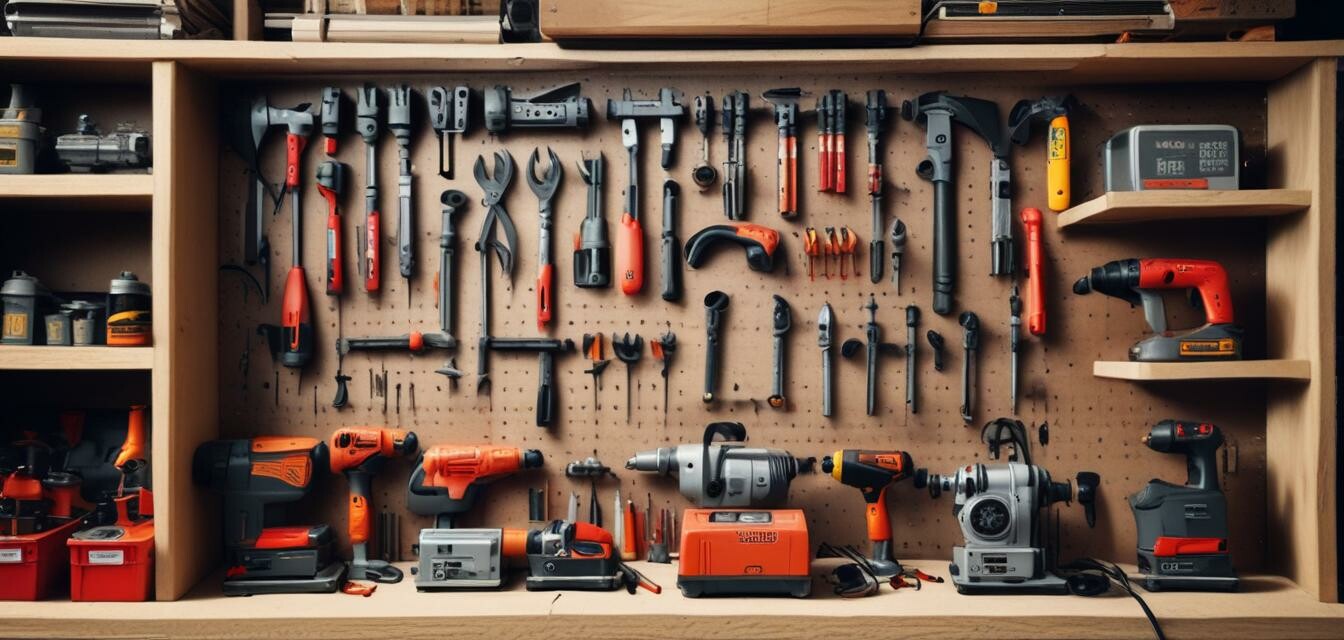
How to create a power tool maintenance schedule
Key Takeaways
- Regular maintenance extends the lifespan of your tools.
- Establishing a schedule ensures no aspect of maintenance is overlooked.
- Different tools require different care techniques and intervals.
- Staying organized helps to keep your workshop efficient.
Maintaining your portable power tools is essential for ensuring they perform at their best and last as long as possible. By creating a structured maintenance schedule, you can systematically care for your tools and keep them in top condition. This guide provides a step-by-step approach to establishing that schedule, covering the most critical aspects of tool upkeep.
Why maintenance is important
Regular maintenance of your power tools not only prolongs their life but also enhances their efficiency and safety. Neglecting tools can lead to performance issues, increased wear and tear, and potentially hazardous situations. Here are some reasons why a maintenance schedule is vital:
- Performance: Well-maintained tools function better, providing the best results.
- Safety: Regular check-ups can help identify and mitigate risks associated with tool failure.
- Cost-effective: Preventive maintenance can save you the expense of unplanned repairs and replacements.
Components of a maintenance schedule
When creating a maintenance schedule, you'll want to cover various aspects. The following table outlines the components you should consider:
| Component | Description | Frequency |
|---|---|---|
| Cleaning | Remove dust, debris, and residue build-up. | After each use |
| Lubrication | Apply lubricant to moving parts to reduce friction. | Monthly |
| Inspection | Check for damages or abnormal wear. | Monthly |
| Battery care | Inspect, clean, and charge batteries appropriately. | Every use |
| Sharpening | Sharpen blades and bits for optimal performance. | As needed |
Creating your maintenance schedule
To create an effective maintenance schedule, follow these steps:
- List your tools: Start by making a comprehensive list of all your power tools.
- Develop a checklist: Create a checklist for each tool based on the components outlined above.
- Set reminders: Utilize an app or calendar to set maintenance reminders.
- Document your maintenance: Keep a record of what work has been done on each tool.
- Review periodically: Evaluate and adjust your schedule as necessary, based on your usage and wear patterns.
Safety tips for tool maintenance
When performing maintenance on your power tools, follow these safety tips:
- Always disconnect power before performing maintenance.
- Use protective gear, such as gloves and safety goggles.
- Refer to manufacturer guidelines for specific maintenance instructions.
- Never rush through maintenance; take your time to ensure accuracy.
Pros
- Increases the longevity of tools.
- Enhances performance and efficiency.
- Improves safety in the workspace.
Cons
- Time-consuming, especially for multiple tools.
- Initial learning curve for proper techniques.
Tips for beginners
- Start with simple maintenance tasks to build confidence.
- Join forums and groups to share experiences and learn tips.
- Invest in a basic maintenance toolkit.
Conclusion
Establishing a power tool maintenance schedule is crucial for any contractor or DIY enthusiast looking to prolong the life of their equipment. With a regular routine, you will maximize performance, ensure safety, and save money over time. For more detailed guides and tips on power tools, check out our How-To Guides section where we cover a variety of techniques and tools. Start your maintenance journey today and enhance your efficiency in the workspace!
